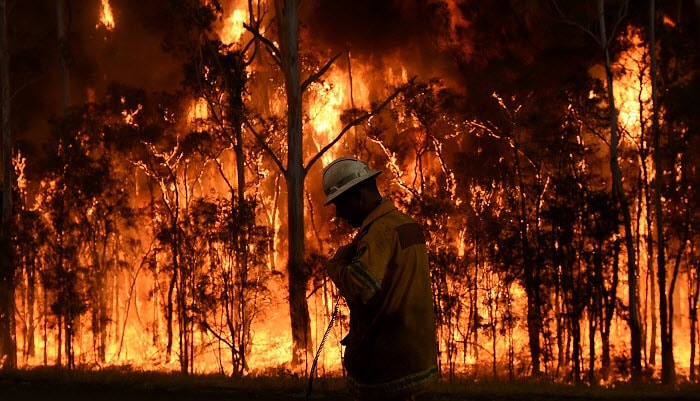Ensuring Shrub Fire Defense Via Appropriate BAL Record Analysis
In the world of bush fire protection, the precise analysis of Bushfire Attack Degree (BAL) reports stands as a keystone for securing buildings versus the devastating impact of wildfires. With ecological elements and property characteristics playing substantial roles in identifying the degree of risk, a detailed understanding of BAL scores becomes imperative.
Understanding Bushfire Strike Level (BAL)
In the world of bushfire protection, understanding the Bushfire Assault Level (BAL) is critical for making certain effective mitigation approaches. BAL is a system utilized to determine the prospective risk a building may deal with from a bushfire. It takes into consideration elements such as the sort of greenery, the slope of the land, the Fire Risk Index, and the Fire Seriousness Index. Comprehending the BAL ranking of a property is essential for residential property building contractors, policymakers, and owners to execute ideal actions to protect versus bushfire dangers.

Significance of BAL Record Evaluation
A crucial element in bushfire security planning includes the thorough evaluation of BAL reports to assess the possible dangers and determine suitable reduction methods. BAL reports offer important information about the possible effect of bushfires on a residential or commercial property based upon various aspects such as vegetation type, range to potential fire dangers, and incline of the land. Analyzing these records with precision is extremely important in developing efficient bushfire protection steps tailored to the certain danger account of a home.
Implementing Fire Defense Steps
Implementing effective fire security procedures is critical for guarding residential properties in bushfire-prone locations. This entails cleaning flammable greenery, such as dry fallen leaves and branches, within a specific distance of the home.
In addition, having a adequate and properly maintained water supply, such as a container or swimming pool, can aid firemens in their efforts to shield the home. BAL Report. In general, applying a mix of these fire defense procedures can substantially increase the possibilities of safeguarding buildings throughout bushfire occasions.
Mitigating Risks in Fire-Prone Areas
To strengthen homes against bushfire hazards, a tactical focus on mitigating risks in fire-prone areas is crucial. Mitigating dangers in fire-prone areas involves a comprehensive technique that incorporates different steps to lower the possibility and influence of bushfires. One crucial element of risk mitigation is preserving defensible space around buildings by removing flammable vegetation, making sure appropriate spacing in between structures and trees, and utilizing fire-resistant landscaping methods. Additionally, executing ember-proofing actions such as setting up steel mesh screens on home windows and covering roofing system cavities can help avoid ember strikes and lessen the risk of spot fires.
Moreover, building or retrofitting buildings with fireproof materials and ensuring proper upkeep of roofing systems, seamless gutters, and outside cladding can significantly enhance the property's strength to bushfires. Creating and practicing a bushfire emergency strategy with all passengers, including evacuation procedures and interaction approaches, is likewise essential in mitigating risks effectively. By taking on a proactive technique to risk mitigation in fire-prone locations, building owners can much better safeguard their properties and enhance general bushfire readiness.
Ensuring Residential Property Safety And Security and Durability
Making sure the safety and more info here security and resilience of residential properties in fire-prone locations requires an unwavering commitment to robust preventive measures and calculated planning. Building safety and security starts with executing effective actions to reduce fire risks.
Strength, on the various other hand, involves the ability of a residential property to stand up to and recuperate from a bushfire. By proactively addressing these facets, residential try these out or commercial property owners can much better secure their assets and liked ones from the hazard of bushfires.
Verdict
In final thought, ensuring bushfire security through proper BAL report evaluation is important for comprehending the level of risk positioned by bushfires and carrying out essential fire defense steps. By mitigating risks in fire-prone areas and making certain residential property safety and resilience, people and communities can better prepare for and respond to bushfire occasions. It is imperative to prioritize fire precaution to secure lives and residential or commercial property in these high-risk atmospheres.
In the world of bush fire protection, the meticulous analysis of Bushfire Assault Degree (BAL) reports stands as a cornerstone for guarding homes versus the destructive effect of wildfires (BAL Report). Understanding the BAL rating of a building is crucial for building owners, building contractors, and policymakers to apply suitable actions to safeguard against bushfire dangers

BAL reports give critical information regarding the potential impact of bushfires on a building based on check this site out different elements such as plant life kind, range to prospective fire risks, and slope of the land (BAL Report). Overall, applying a combination of these fire defense procedures can considerably increase the chances of guarding properties throughout bushfire events